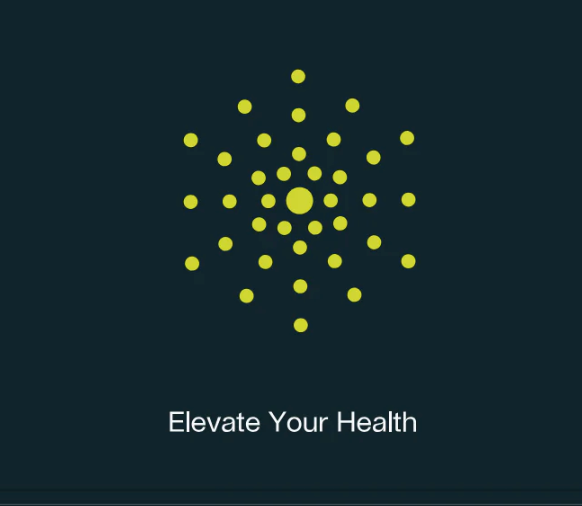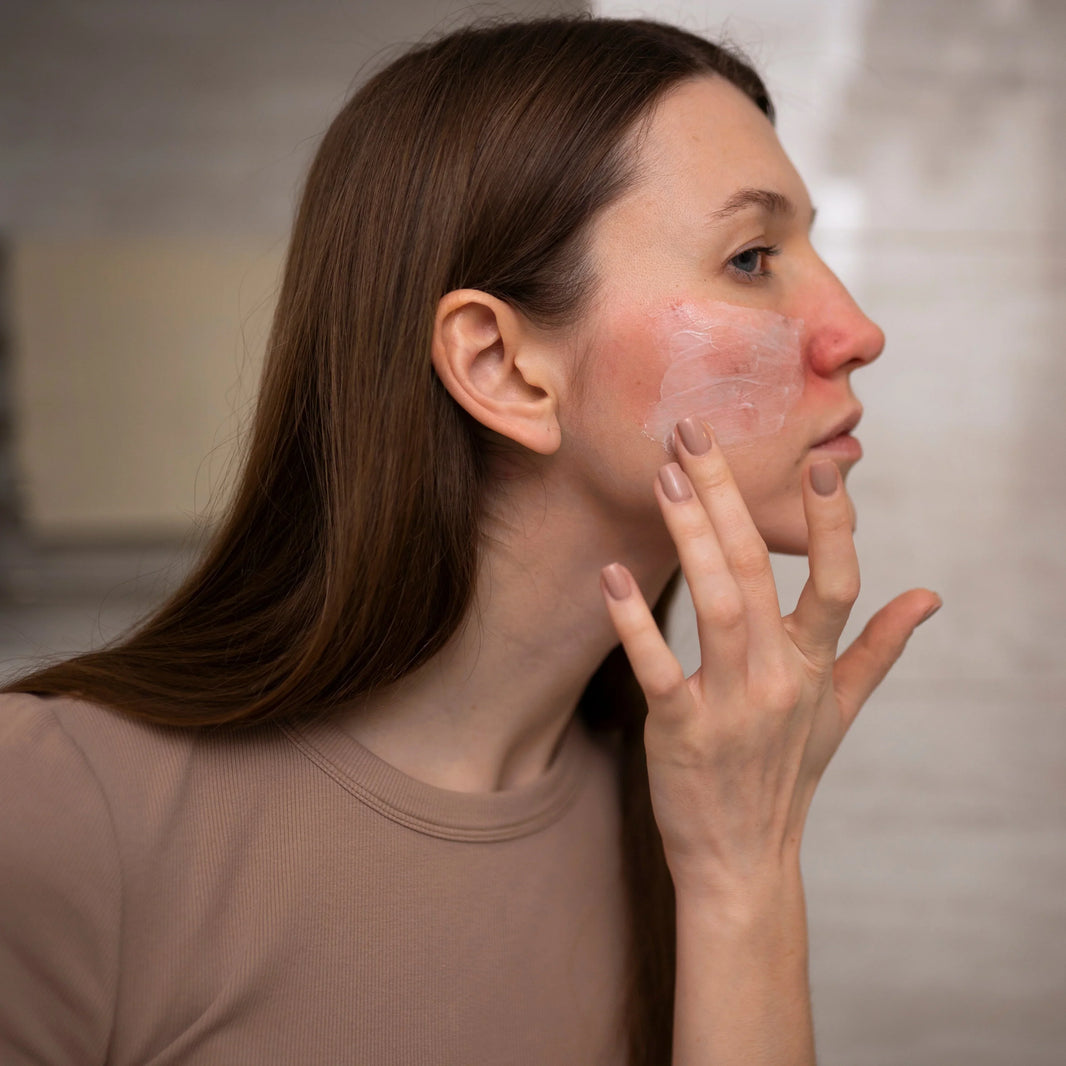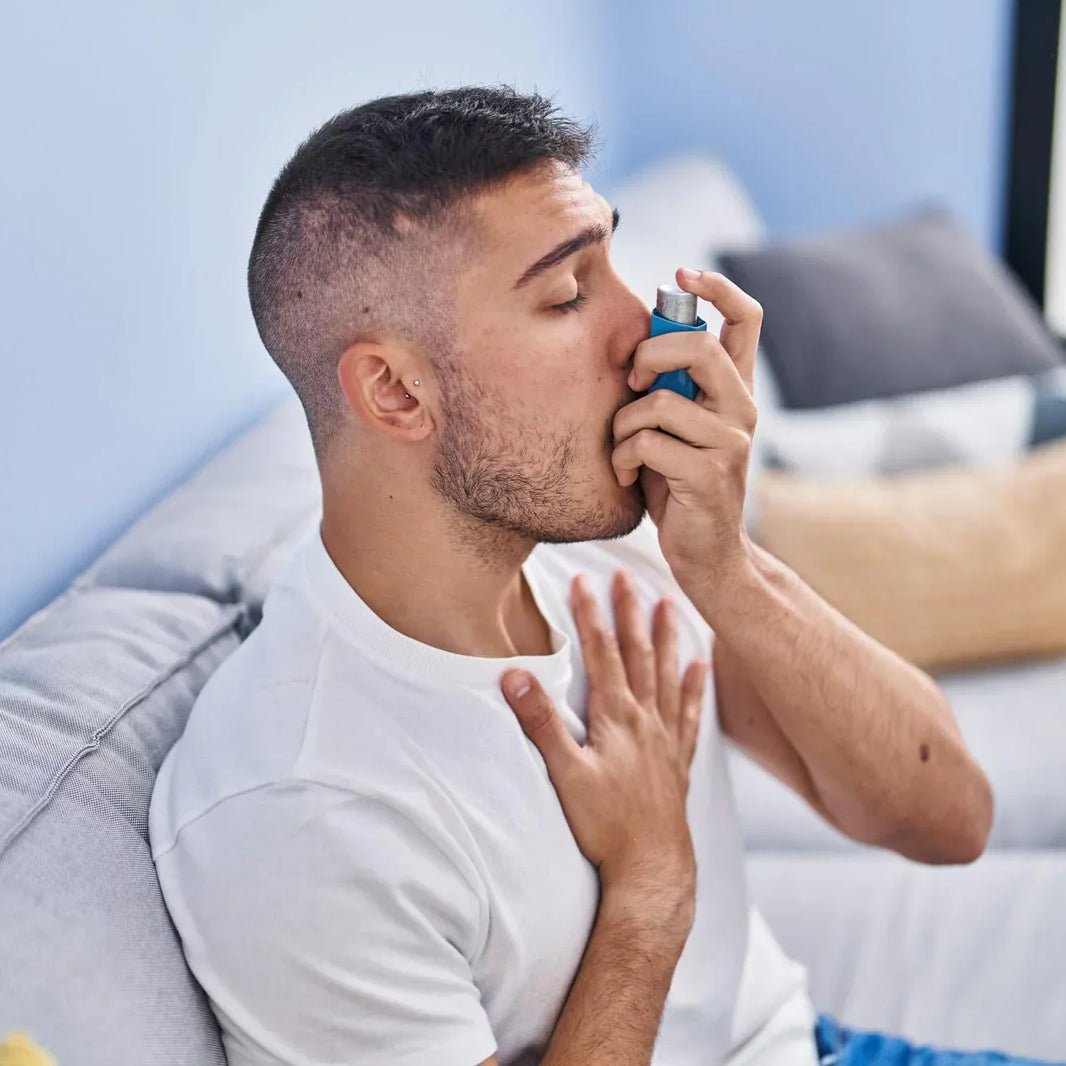Stress relief support encompasses a spectrum of therapeutic approaches designed to mitigate the physiological and psychological impacts of stress on the human body. These interventions target various biological pathways involved in the stress response, primarily focusing on the hypothalamic-pituitary-adrenal (HPA) axis, neurotransmitter systems, and oxidative stress mechanisms. Current research demonstrates promising evidence for adaptogenic herbs like Ashwagandha and Holy Basil, as well as mind-body practices such as mindfulness meditation, while some newer approaches remain in experimental stages with limited clinical validation. The effectiveness of these interventions appears to be mediated through multiple pathways, including cortisol reduction, modulation of neurotransmitter activity, and activation of antioxidant defense systems.
The Biological Foundations of Stress
The HPA Axis and Stress Response Mechanisms
The hypothalamic-pituitary-adrenal (HPA) axis serves as the primary physiological system mediating the body's response to stress. This complex neuroendocrine pathway orchestrates the release of glucocorticoids, particularly cortisol, which plays a crucial role in the adaptation to stressors. When functioning normally, the HPA axis facilitates appropriate responses to acute stressors and maintains homeostasis. However, in chronic stress scenarios, prolonged activation of this system results in persistently elevated cortisol levels, contributing to various neurological and psychological disorders, including depression and cognitive impairment7. The dysregulation of the HPA axis represents a critical link between chronic stress and pathological conditions, as excessive glucocorticoid exposure can lead to hippocampal atrophy, synaptic dysfunction, and neuroinflammation7. These alterations not only impair cognitive function but also affect emotional regulation, creating a physiological basis for stress-related disorders.
The complex interplay between chronic stress, HPA axis dysregulation, and inflammatory processes illustrates the multifaceted nature of stress pathophysiology. Research indicates that stress-induced alterations in cortisol rhythmicity and receptor sensitivity significantly impact various physiological systems, including metabolic regulation and immune function11. The pulsatile nature of cortisol secretion, characterized by circadian and ultradian rhythms, is essential for proper cellular responses and genomic signaling. Disruptions to these patterns, commonly observed in chronic stress states, contribute to tissue-specific alterations in glucocorticoid sensitivity, which may explain the varied manifestations of stress-related disorders across different organ systems and individuals11. This understanding provides valuable insights into why stress relief interventions targeting HPA axis regulation may offer therapeutic benefits.
Oxidative Stress and Cellular Mechanisms
Oxidative stress represents another critical mechanism through which psychological and physiological stressors impact cellular function and contribute to various pathological conditions. The imbalance between reactive oxygen species (ROS) production and antioxidant defense capabilities leads to cellular damage, inflammatory responses, and disrupted signaling pathways. Chronic stress has been shown to induce oxidative damage in multiple tissues, including neuronal structures that regulate mood and cognitive function18. The accumulation of ROS within the central nervous system can trigger neuronal regulated cell death (RCD), which contributes to neurodegenerative processes and neuropsychiatric conditions. This connection between oxidative stress and neurological function provides a biological basis for the relationship between chronic stress and mental health disturbances.
The interrelationship between stress, inflammation, and oxidative processes creates a self-perpetuating cycle that amplifies cellular damage and dysfunction. Stress-induced activation of inflammatory pathways increases ROS production, while oxidative stress further promotes inflammatory responses through activation of transcription factors like NF-κB5. Additionally, chronic stress impairs mitochondrial function, the primary cellular source of ROS, leading to energy deficits and enhanced oxidative burden. The multidirectional relationships between these pathways highlight the complexity of stress-related pathophysiology and underscore the need for interventions that can interrupt this cycle at multiple points. Effective stress relief support often targets these interrelated mechanisms to restore cellular homeostasis and promote resilience against stressors.
Evidence-Based Interventions for Stress Relief
Adaptogenic Herbs: Mechanisms and Efficacy
Adaptogenic herbs have emerged as promising agents for stress relief, with substantial evidence supporting their efficacy in modulating stress response systems. Ashwagandha (Withania somnifera), a traditional Ayurvedic herb, has demonstrated significant stress-relieving properties through multiple mechanisms. Research indicates that ashwagandha supplementation at doses ranging from 250 to 600 mg daily for 4 to 12 weeks significantly improves sleep quality, latency, and efficiency while reducing stress markers2. These effects appear to be mediated primarily through modulation of the HPA axis, resulting in reduced cortisol levels, and enhancement of GABAergic and serotonergic neurotransmission2. The ability of ashwagandha to influence these diverse yet interconnected pathways likely explains its comprehensive effects on both psychological and physiological manifestations of stress. The consistency of findings across various populations, including healthy adults and elderly individuals, strengthens the evidence supporting ashwagandha as an effective adaptogen.
Ocimum tenuiflorum (Holy Basil), another traditional medicinal plant with adaptogenic properties, has demonstrated promising anti-stress potential through specific modulatory effects on stress response systems. Experimental studies have shown that Ocimum tenuiflorum extract enhances swimming endurance in mice, reduces stress-induced immobility time, and prevents corticosterone elevation in response to forced swim tests3. The underlying mechanisms appear to involve direct inhibition of cortisol release and antagonism of corticotropin-releasing factor (CRF1) receptors, which are critical components of the HPA axis stress response pathway3. These findings suggest that Ocimum tenuiflorum exerts its stress-relieving effects by specifically targeting key regulators of the stress response cascade, rather than through general antioxidant or anti-inflammatory actions alone. The dual action on cortisol release and CRF1 receptor activity provides a mechanistic framework for understanding how this herb effectively manages stress at the physiological level.
Mind-Body Interventions: Pathways and Evidence
Mind-body interventions, particularly mindfulness and meditation practices, represent another well-studied approach to stress relief with demonstrated efficacy across diverse populations. These practices appear to reduce stress through multiple neurobiological mechanisms, including modulation of the autonomic nervous system, reduction in inflammatory markers, and altered activity in brain regions associated with stress processing and emotional regulation10. The implementation of mindfulness and meditation techniques has been shown to enhance self-awareness, empathy, and complex problem-solving skills while supporting effective coping strategies in stressful situations. For children, these approaches have proven particularly beneficial, as they align with developmental capabilities and can be adapted to various settings, including healthcare environments10. The non-invasive nature of these interventions makes them especially valuable for vulnerable populations who may have limited access to or tolerance for pharmacological approaches.
Research examining various meditation techniques has revealed differential effects on specific aspects of stress response. For instance, practices incorporating breathing exercises appear to more directly influence autonomic nervous system function, while mindfulness-based cognitive approaches may preferentially affect cognitive appraisal processes and emotional regulation15. In clinical settings, mindfulness practices and relaxation therapy have demonstrated efficacy for pain management in palliative care patients, highlighting their utility beyond general stress relief15. However, not all mind-body approaches show consistent effects; one study found that mindful breathing intervention did not significantly reduce pain, suggesting that the specific technique and context may influence outcomes15. Despite these variations, the overall evidence supports the inclusion of mindfulness and meditation in comprehensive stress management programs, particularly when tailored to individual needs and circumstances.
Social and Psychological Support Frameworks
Social support represents a powerful buffer against the negative impacts of stress on both physical and psychological health outcomes. Research has demonstrated that perceived social support significantly mitigates the effects of stress from negative events on quality of life measures, although the buffering effect appears to be more pronounced in females than males12. This gender difference suggests that social support interventions may need to be tailored differently based on gender to maximize effectiveness. The mechanisms through which social support confers protection likely involve both direct effects on stress appraisal processes and indirect effects through enhanced coping resources and reduced physiological reactivity to stressors. The multidimensional nature of social support, encompassing emotional, instrumental, and informational dimensions, allows for diverse pathways through which supportive relationships can mitigate stress impacts.
Psychological approaches targeting stress appraisal and coping strategies provide another evidence-based framework for stress relief. While the original stress-buffering hypothesis proposed that social support facilitates primary and secondary reappraisal of stressful situations, research examining this specific mechanism has yielded mixed results12. Neither primary nor secondary appraisal appear to act as additional buffers for males or females in some studies, suggesting that reappraisal mechanisms may play a different role in stress buffering pathways than initially theorized12. Despite this complexity, psychological interventions focused on enhancing coping skills, cognitive reframing, and emotional regulation continue to show efficacy for stress management. Approaches such as stress management training and cognitive-behavioral strategies provide individuals with concrete tools to navigate stressors more effectively and reduce their psychological and physiological impact.
Biochemical Pathways and Molecular Targets
Oxidative Stress Relief and Neuroprotection
The NRF2/HO-1 signaling pathway represents a critical cellular defense mechanism against oxidative stress and has emerged as an important target for stress relief interventions. This pathway regulates the expression of numerous antioxidant and detoxifying enzymes that protect cells from oxidative damage. Research on Polygonatum cyrtonema Hua polysaccharides (PCP) has demonstrated that they can reduce oxidative stress-induced reactive oxygen species (ROS) accumulation by activating the NRF2/HO-1 signaling pathway, thereby attenuating regulated cell death in microglia18. This finding illustrates how botanical compounds can provide stress relief at the cellular level by enhancing endogenous antioxidant defense systems. The neuroprotective effects of such interventions are particularly relevant given the sensitivity of neural tissues to oxidative damage and the role of oxidative stress in various neurological and psychological conditions associated with chronic stress.
Phytochemicals from various plant sources have demonstrated multi-target mechanisms for neuroprotection and stress relief through their effects on oxidative processes. These compounds exert antioxidant, anti-neuroinflammatory, and anti-amyloid properties that collectively contribute to their stress-relieving and neuroprotective effects1. The ability of these natural compounds to simultaneously influence multiple pathways involved in stress response and neuronal health represents a significant advantage over single-target approaches. By addressing both the causes and consequences of oxidative stress in neural tissues, these interventions may provide more comprehensive protection against stress-induced damage and dysfunction. However, despite promising preclinical findings, many of these compounds still require more rigorous clinical evaluation to definitively confirm their protective effects and enable translational applications1.
Neurotransmitter Modulation and HPA Axis Regulation
The modulation of neurotransmitter systems represents another crucial mechanism through which stress relief interventions exert their effects. Adaptogenic herbs like Ashwagandha influence GABAergic and serotonergic pathways, which play essential roles in mood regulation, anxiety, and sleep2. By enhancing inhibitory neurotransmission through GABA receptors and modulating serotonin activity, these interventions can directly counteract the neurochemical imbalances associated with chronic stress. Additionally, the interaction between these neurotransmitter systems and the HPA axis creates opportunities for interventions to indirectly influence cortisol regulation through effects on upstream signaling pathways. The complex interplay between neurotransmitter systems and neuroendocrine pathways highlights the importance of considering multiple targets when developing comprehensive stress relief interventions.
The CRF1 receptor represents a specific molecular target with significant potential for stress relief interventions. As a key component of the HPA axis, this receptor mediates the effects of corticotropin-releasing factor, which initiates the hormonal cascade leading to cortisol release. Research on Ocimum tenuiflorum has demonstrated significant CRF1 receptor antagonist activity, which contributes to its stress-relieving effects3. This mechanism provides a direct means of intervening in the stress response at its origin, potentially preventing the downstream consequences of HPA axis activation. By targeting specific receptors and signaling molecules within stress response pathways, interventions can achieve more precise modulation of physiological stress responses than would be possible through general approaches alone. This receptor-level specificity represents an important advance in understanding how botanical compounds and other interventions can provide targeted stress relief.
Evaluating Emerging and Unproven Approaches
Dietary Supplements and Nutritional Interventions
While several dietary supplements show promise for stress relief, the evidence base varies considerably across different compounds. Research on dietary supplementation for inflammatory conditions suggests that polyunsaturated fatty acids, flavones, prebiotics, and probiotics are among the most extensively studied compounds with demonstrated protective effects17. These substances appear to reduce inflammation and oxidative stress while protecting epithelial barriers and modifying the microbiota, all of which may contribute to stress resilience. However, even for these relatively well-studied compounds, more rigorous protocols are needed to definitively confirm their protective effects and enable translational research17. Other dietary interventions derived from fruits, vegetables, plant compounds, minerals, vitamins, and polyphenols require further investigation despite showing preliminary promise. The current state of evidence suggests a need for more comprehensive and methodologically robust studies to clarify the efficacy of these nutritional approaches for stress management.
Adaptogenic herbs marketed specifically for stress relief, such as those highlighted in ingredient trends for food, drinks, and dietary supplements, represent a growing category of products with varying levels of evidence. While some adaptogens like ashwagandha have substantial research support19, many products in this category lack sufficient clinical validation despite their commercial popularity. The mechanisms through which less-studied adaptogens might influence stress physiology remain speculative in many cases, limiting their clinical application. Additionally, considerations regarding optimal dosing, potential interactions with medications, and safety profiles across different populations require further elucidation. This gap between commercial availability and scientific evidence underscores the importance of critical evaluation when considering dietary supplements for stress management, particularly for those with underlying health conditions or taking multiple medications.
Experimental Non-Pharmacological Approaches
Various non-pharmacological interventions for stress relief demonstrate different levels of evidence regarding their efficacy. In palliative care settings, interventions using massage therapy and virtual reality have shown the strongest evidentiary support for pain management and associated stress reduction15. In contrast, art therapy currently lacks sufficient evidence to support its widespread implementation for pain and stress management15. These findings highlight the importance of evidence-based selection when recommending non-pharmacological approaches for stress relief, particularly in clinical contexts. The varying levels of evidence also reflect the methodological challenges in studying these interventions, including difficulties in blinding, standardization of protocols, and selection of appropriate control conditions. Despite these limitations, continuing research in this area remains essential for expanding the toolkit of evidence-based stress management strategies.
Psychological First Aid (PFA) represents an emerging approach for psychological support following exposure to potentially traumatic events, but its evidence base remains limited. While findings from available studies suggest a positive impact of PFA, with most reporting reduced symptoms of anxiety, depression, posttraumatic stress, and distress, the methodological quality of existing research is generally low4. Only one randomized controlled trial was identified in a systematic review, highlighting the need for more rigorous evaluation of this widely implemented approach4. The limitations in current evidence do not necessarily indicate ineffectiveness but rather underscore the challenges in conducting methodologically sound research in post-disaster and emergency contexts. This situation exemplifies the broader challenge of balancing the need for immediate intervention with the scientific imperative for robust evidence, a tension common to many emerging stress relief approaches.
Integration and Practical Applications
Personalized Approaches to Stress Management
The multifaceted nature of stress responses necessitates personalized approaches to stress management that account for individual differences in stress reactivity, coping styles, and physiological vulnerabilities. Research on the stress-obesity connection illustrates how stress affects individuals differently based on physiological, affective, cognitive, and behavioral dimensions11. This complexity requires integrated approaches tailored to individual needs, incorporating lifestyle modifications, behavioral interventions, and psychosocial support11. The personalization of stress relief interventions may be particularly important given the observed gender differences in stress buffering, with social support appearing more effective for females than males in some studies12. Additionally, consideration of developmental stage, cultural context, and specific stressors can enhance the relevance and effectiveness of stress management strategies. By matching interventions to individual characteristics and contexts, stress relief approaches can achieve greater precision and efficacy.
The integration of multiple evidence-based approaches often yields more comprehensive stress management outcomes than single-modality interventions. Combining adaptogenic herbs that target HPA axis regulation with mind-body practices that enhance psychological coping creates complementary effects addressing both physiological and psychological aspects of stress. Similarly, incorporating social support frameworks alongside individual stress management techniques acknowledges the importance of interpersonal resources in stress resilience. The synergistic potential of these combined approaches reflects the interconnected nature of stress pathways and suggests that multi-component interventions may more effectively address the complex cascade of stress responses. However, the optimal combination and sequencing of different stress relief modalities remains an area requiring further research, particularly regarding potential interactions between pharmaceutical, botanical, and psychological interventions.
Workplace and Clinical Applications
The implementation of stress relief support in specific contexts such as workplace settings represents an important area of application with significant public health implications. The COVID-19 pandemic has highlighted particular challenges for home-working employees, who face increased work-related stress resulting from altered work environments and blurred boundaries between professional and personal life6. Human resource managers can address these challenges through strategies focused on job support, work-family balance, and psychological relief6. By adopting a comprehensive approach to workplace stress management that encompasses both organizational and individual interventions, employers can mitigate the adverse effects of work-related stress on productivity, employee well-being, and organizational outcomes. The integration of evidence-based stress relief approaches into workplace wellness programs represents a promising strategy for addressing occupational stress at both prevention and intervention levels.
In clinical settings, stress relief support for healthcare professionals, particularly nurses, has gained increasing attention due to the extraordinary stressors inherent to medical environments. Mindfulness-based programs have shown promise in reducing stress experienced by nurses in adult hospital settings, potentially addressing the negative impacts of stress on high-level cognitive functions, attention, and memory that are critical for patient safety8. The implementation of stress relief interventions in healthcare contexts not only benefits providers but may also indirectly improve patient outcomes by enhancing provider well-being and performance. Additionally, stress management approaches for patients themselves, particularly those with chronic conditions, can complement medical treatments and improve overall care outcomes. Perioperative skills-based interventions, including hypnosis, relaxation therapy, and mindfulness, show potential for supporting non-pharmacological pain management and possibly reducing chronic postsurgical pain, although more research is needed in this specific application13.
Conclusion
Stress relief support encompasses a diverse array of interventions targeting various biological pathways and psychological processes involved in stress response. The most substantial evidence supports adaptogenic herbs like Ashwagandha and Holy Basil, which modulate the HPA axis and neurotransmitter systems to reduce physiological stress responses. Mind-body interventions, particularly mindfulness and meditation practices, demonstrate efficacy through multiple mechanisms, including autonomic regulation and enhanced psychological coping. Social support frameworks provide significant buffering effects against stress impacts, though with notable gender differences in responsiveness. The molecular mechanisms underlying effective stress relief interventions include NRF2/HO-1 pathway activation for oxidative stress reduction, CRF1 receptor antagonism for HPA axis modulation, and neurotransmitter system regulation. While many dietary supplements and emerging non-pharmacological approaches show promise, they generally require more rigorous evaluation before definitive conclusions about their efficacy can be drawn. Future directions should focus on personalized, integrated approaches to stress management that address the complex, multifaceted nature of stress responses across different contexts and populations.
Citations:
- https://www.ncbi.nlm.nih.gov/pmc/articles/PMC9500804/
- https://www.semanticscholar.org/paper/bf70cbc4f22c180463dba4be22aea258cd92cb1d
- https://www.ncbi.nlm.nih.gov/pmc/articles/PMC10159140/
- https://pubmed.ncbi.nlm.nih.gov/36300605/
- https://www.ncbi.nlm.nih.gov/pmc/articles/PMC10763046/
- https://pubmed.ncbi.nlm.nih.gov/35081591/
- https://www.ncbi.nlm.nih.gov/pmc/articles/PMC11416836/
- https://pubmed.ncbi.nlm.nih.gov/26571279/
- https://www.ncbi.nlm.nih.gov/pmc/articles/PMC9259607/
- https://www.semanticscholar.org/paper/782b20a76bba13f095fc77a992ad4112b311664e
- https://pubmed.ncbi.nlm.nih.gov/39623561/
- https://pubmed.ncbi.nlm.nih.gov/32419328/
- https://www.ncbi.nlm.nih.gov/pmc/articles/PMC11877026/
- https://www.ncbi.nlm.nih.gov/pmc/articles/PMC6558832/
- https://www.ncbi.nlm.nih.gov/pmc/articles/PMC10785737/
- https://www.ncbi.nlm.nih.gov/pmc/articles/PMC7369951/
- https://pubmed.ncbi.nlm.nih.gov/39992299/
- https://www.ncbi.nlm.nih.gov/pmc/articles/PMC9610736/
- https://www.semanticscholar.org/paper/4887d5717555de6d8a738553345d30598e258d1d
- https://www.ncbi.nlm.nih.gov/pmc/articles/PMC11676234/
- https://pubmed.ncbi.nlm.nih.gov/32546520/
- https://www.ncbi.nlm.nih.gov/pmc/articles/PMC5876946/
- https://www.ncbi.nlm.nih.gov/pmc/articles/PMC9655067/
- https://www.ncbi.nlm.nih.gov/pmc/articles/PMC8803637/
- https://www.semanticscholar.org/paper/cc61034131bfab3868b2403f0713bfa45a0b864b
- https://www.semanticscholar.org/paper/923c2b8486de94817b52115a861b465aa87d7ae1
- https://www.ncbi.nlm.nih.gov/pmc/articles/PMC9735078/
- https://www.ncbi.nlm.nih.gov/pmc/articles/PMC7026265/
- https://pubmed.ncbi.nlm.nih.gov/34508247/
- https://www.ncbi.nlm.nih.gov/pmc/articles/PMC11666575/
- https://www.ncbi.nlm.nih.gov/pmc/articles/PMC11453990/
- https://www.ncbi.nlm.nih.gov/pmc/articles/PMC9380733/
- https://www.semanticscholar.org/paper/280f9f39ae43fb8b696fd86d958ed68518574ec8
- https://www.semanticscholar.org/paper/7c6ef40dd8b9a640eb8190ec904f05776f7a2642
- https://www.semanticscholar.org/paper/72e5b39698f0ed0f4f9976c4a8b3db4df40ba1d0
- https://www.ncbi.nlm.nih.gov/pmc/articles/PMC9713957/
- https://pubmed.ncbi.nlm.nih.gov/33150970/
- https://pubmed.ncbi.nlm.nih.gov/35435113/
- https://pubmed.ncbi.nlm.nih.gov/32516487/
- https://www.ncbi.nlm.nih.gov/pmc/articles/PMC7035553/
- https://www.ncbi.nlm.nih.gov/pmc/articles/PMC7467462/
- https://www.ncbi.nlm.nih.gov/pmc/articles/PMC7728608/
- https://www.ncbi.nlm.nih.gov/pmc/articles/PMC10474116/
- https://pubmed.ncbi.nlm.nih.gov/32080423/
- https://www.ncbi.nlm.nih.gov/pmc/articles/PMC6728003/
- https://pubmed.ncbi.nlm.nih.gov/33751456/








